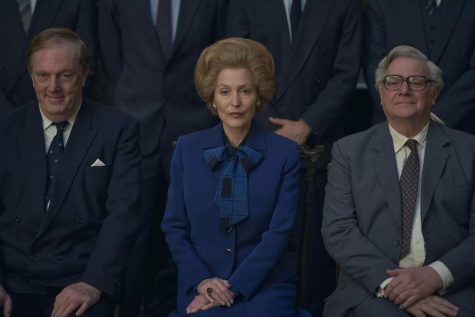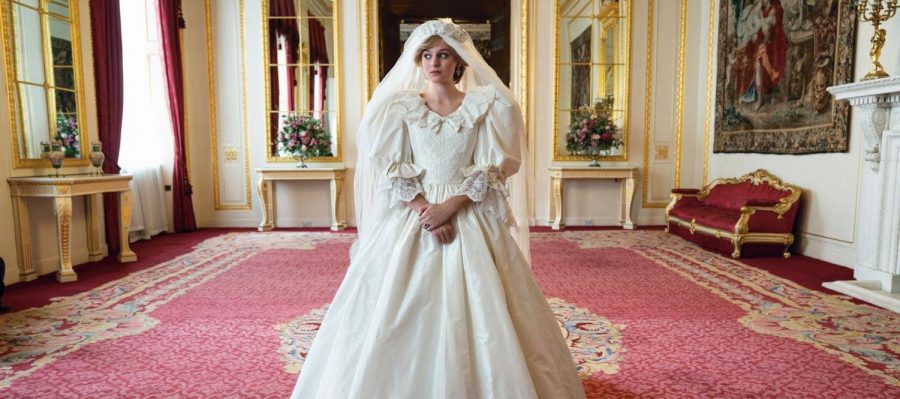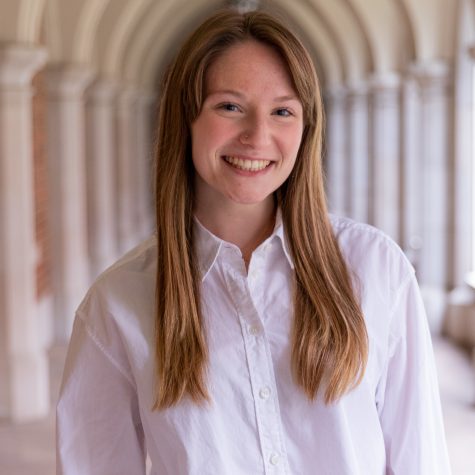In its highly-anticipated fourth season, Netflix’s original series “The Crown” returns with its typical grandeur, once again taking us inside the gates of Buckingham Palace to observe the royal family throughout the tumultuous 1980s. The show does not disappoint in its dazzling scenery—this time taking us from the remote Scottish countryside to the shores of Australia—and powerful score, two elements which have become almost expected over the past three seasons.
What distinguishes this season from the rest, however, is the introduction of two new characters, each with their own compelling narratives. American actress Gillian Anderson portrays the Iron Lady in a gripping performance of Margaret Thatcher, and on-screen newby Emma Corrin gives us a new take on Lady Diana Spencer. From a thematic standpoint, the expectations placed on both roles are incredibly high, especially for the part of Lady Diana, a character still explored and exploited more than two decades after the princess’s tragic and premature death.
This season went above and beyond, per usual, in its intimate examination of these new leading ladies’ lives. The season foregoes coverage of the time period’s most noteworthy events, such as the wedding between Prince Charles and Princess Diana, giving us only a glimpse of the princess in her instantly recognizable voluminous white dress. Instead, the show opts to illustrate the royal family’s experiences outside of the public eye, pulling at our heartstrings at one moment and filling us with rage at the next.
For her part, Corrin breathes new life into Diana, mastering the princess’s sheepish innocence while also embodying the more hardened parts of her character. In several scenes, we bear close witness to Diana’s eating disorder, watching as she engages in binge-eating only to lock herself in the bathroom immediately after. The emphasis on her struggle with bulimia works to humanize Diana, providing us with another dimension with which to consider the tabloid starlet. In the heart wrenching scenes between a naïve Diana and a conflicted Charles, we arrive at another conclusion about the royal family’s most sought-after couple (before Prince Harry and Meghan, of course): the relationship was doomed from the start. As Princess Margaret so aptly suggests in the third episode, the two young people were forced into a marriage that should not have happened in the first place.

Gillian Anderson’s Margaret Thatcher does her part to provide an interesting political and social subtext to the season. As the first female prime minister of Britain serving alongside an entirely male cabinet, the working-class Thatcher offers us a refreshing break from the occasionally overwhelming pomp of nobility. Her grit is masterfully paired with a revealing look at her personal life, demanding our empathy as we become simultaneously humbled by her determination. In her scenes with the queen, we are treated to an intense competition for dominance and mutual respect as the two most powerful people in Britain grapple with the implications of female leadership in both its constitutional monarchy and parliamentary state for the first time. The interactions between the two make for an especially engaging dynamic as we find ourselves rooting for the two of them, even as their interests are at odds.
Now portraying Queen Elizabeth II a second time around, Olivia Colman settles comfortably into her role as the aging monarch, trading in some of her initial severity for a more nuanced look into her responsibilities as a mother, sister and wife. As her children emerge as young adults and make names for themselves in their own right, Elizabeth balances the duties of the crown with her obligations as a parent. In keeping with past seasons, “The Crown” fulfills its task of painting a complex picture of its protagonist, reminding us time and again of the delicate balance Elizabeth must keep between her personal desires and her obligation as the nation’s monarch.
The fourth season concludes at the beginning of the 1990s, still seven years before the horrific death of Princess Diana, which is sure to dominate the next season. “The Crown” has been approved for six seasons in total, with another recasting (the first one occurred after the second season to reflect the aging characters) to take place between the fourth and fifth seasons. Imelda Staunton, who you may recognize as Professor Dolores Umbridge from “Harry Potter and the Order of Phoenix” and “Harry Potter and the Deathly Hallows, Part I,” has already been cast as the next queen, and Elizabeth Debicki as an older Diana.
After this season’s successful integration of three strong female characters into the plot line, it will be interesting to see how the fifth season addresses the consequential death of Princess Diana and the chaos it wrought upon the royal family. In the meantime, you can enjoy the stunning Scottish scenery in all 10 episodes of Season 4 of “The Crown” on Netflix now.



